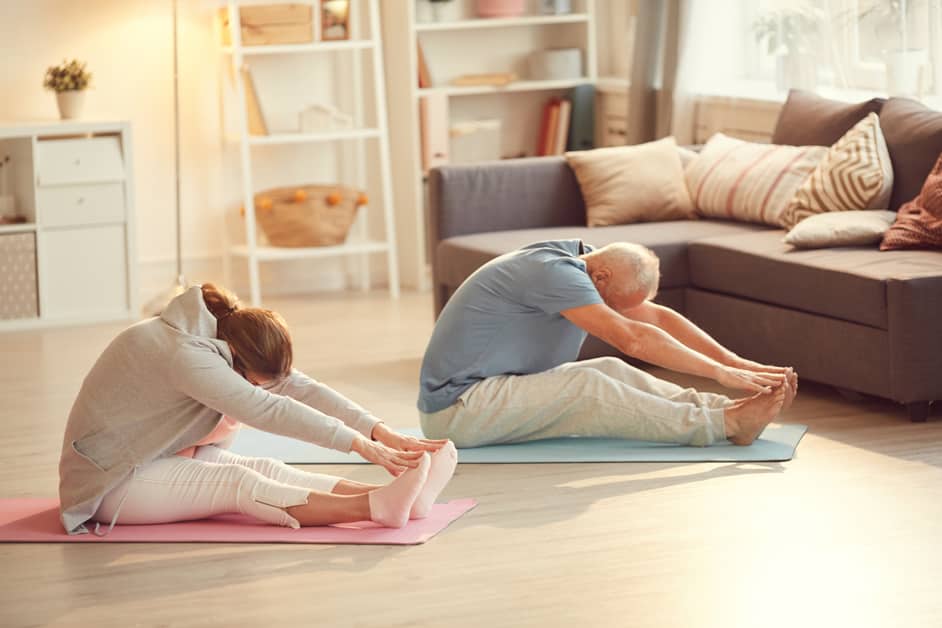Introduction
Dynamic stretching is essential for injury prevention and training. It boosts range of motion, muscle activation, and coordination. This helps improve strength, endurance, power, speed, and reaction time. It also decreases the risk of lower limb injuries.
Dynamic stretching improves form and technique in activities such as running or jumping, resulting in better performance. It also cuts fatigue because it engages many muscle groups in similar movements to those used in sports or recreational fitness like jump roping. This gives better motor control during dynamic activities that require quick adjustments to avoid injury.
What is Dynamic Stretching?
Dynamic stretching is an active movement exercise that focuses on a joint’s range of motion. It is different from static stretching, which uses stretches in stationary positions and holds. Dynamic stretching uses momentum and body movement to lengthen muscles and increase active control.
This form of exercise is popular amongst athletes, as it is safer than static stretching. Dynamic stretching helps to improve coordination and physical balance, reduce muscular tension and achieve better neuromuscular efficiency. It also leads to better functional mobility and postural control.
Through changing body positions in a wide range of motion or mimicking motions, like skipping, shuffling or running on the spot, reflexes and muscular reactions can be improved. Repetitive exercises for the hip and thoracic regions can also help with knee stability.
Benefits of Dynamic Stretching
Dynamic stretching is great for knee stability and balance. Move your body and gradually increase the reach, speed, or both. This type of stretching increases muscle flexibility by pushing it beyond its normal range of motion. Plus, it boosts mobility, coordination, and neuromuscular control.
Let’s explore the benefits of dynamic stretching for knee stability and balance:
Improved Knee Stability
Dynamic stretching can boost flexibility, coordination, balance and knee stability. It can prevent injuries and make muscles perform better. Knee stability is especially important for running and high-impact sports. Dynamic stretches can help knee joints move more freely. They focus on hip extension, hip abduction and gluteal strengthening.
Examples include:
- Walking extended lunges
- Reverse lunges
- Curtsy lunges
- Kneel to stand exercises
- Lunge with a twist
- Jumping jacks
- Side shuffles
Improved Balance
Dynamic stretching can help your balance and stability. Do controlled movements such as bodyweight squats and lunges for stronger muscles around your hips and knees. This increases the range of motion of your lower body joints. Strengthening knee extensors and flexors is also beneficial.
Core muscles get stronger, improving posture. You’ll have better strength and control when walking or running on difficult terrain. Plus, exercise will be more efficient due to lower-extremity muscle recruitment.
All this leads to greater balance. So, you’ll be less tired doing things like getting up from a chair or carrying groceries.
Improved Flexibility
Dynamic stretching is a technique used to lower the risk of injuries, increase flexibility, and enhance strength. It has been used by athletes and physical activity lovers for a while. It can be done as a warm-up before exercise or as a recovery workout afterwards.
It has several benefits, such as:
- increased flexibility
- enlarged range of motion
- activated muscles
- faster response to surprises
- improved synchronization between muscles in various motion planes
Flexibility is one of the main advantages. It activates nerve reflexes that manage muscle tension in different body parts. It helps in extending the range of motion in all directions. It quickly accesses certain regions and strengthens them with relevant stretches that can alter joint angles quickly.
Dynamic stretching movements also boost muscle activation in your body. This improves your reaction to sudden changes and keeps knee stability with bigger muscular force production capability in various angles in multiple motion planes. Plus, dynamic stretching increases motor control so you can move better, like cutting or changing direction suddenly.
How to Incorporate Dynamic Stretching Into Your Workouts
Dynamic stretching is great for knee stability. It can improve range of motion, coordination, body control, and muscular strength. When combined with jogging or cycling, it can provide extra benefit.
When doing dynamic stretching, movements should mimic activities you do during physical activity – like running or jumping. Focus on exercises that involve changes in direction and eccentric loading. Eg: lunge drills, side-steps, feet-taps, mini-hops.
Dynamic stretching also promotes coordination between muscles and adds complexity to workout programs – saving time!
Add dynamic stretching to your workouts to increase range of motion before doing strenuous activities such as sprinting or lifting weights. This will help stabilize your knees.
Conclusion
Dynamic stretching can help you reduce knee pain, gain improved stability and balance, and strengthen your muscles. It increases flexibility, and encourages blood flow to the surrounding muscles. It focuses on proper form and technique, and helps build coordination between lower body muscle groups. With regular stretching, dynamic stretching can improve knee joint strength by improving mobility.
Know how it works, its benefits, and how to do the stretches – this will help you gain control over knee stability, and reduce pain!
- Benefits of dynamic stretching include:
- Reduced knee pain
- Improved stability and balance
- Strengthened muscles
- Increased flexibility
- Improved blood flow to surrounding muscles
- Improved coordination between lower body muscle groups
- Improved knee joint strength
Frequently Asked Questions
Q: What are the benefits of dynamic stretching for knee stability and balance?
A: Dynamic stretching offers a number of benefits for knee stability and balance. It can help to increase range of motion, improve flexibility, and reduce the risk of injury. It can also help to improve coordination and balance, as well as reduce muscle stiffness and soreness. Additionally, dynamic stretching can help to improve posture and movement control, which can help to improve overall performance.
Q: How often should I do dynamic stretching exercises?
A: The frequency of dynamic stretching exercises should depend on your individual needs. Generally speaking, it is recommended to do dynamic stretching exercises at least 3-4 times a week, as part of your regular exercise routine.
Q: Are there any risks associated with dynamic stretching?
A: Dynamic stretching is generally considered to be safe, but it is important to make sure that you are following proper technique and form to avoid any potential injuries. Additionally, it is important to start slowly and gradually increase the intensity and duration of the exercises as you become more comfortable with them.




